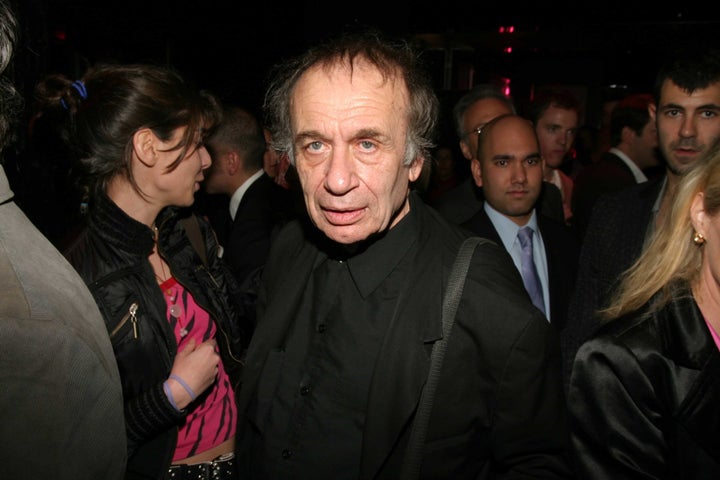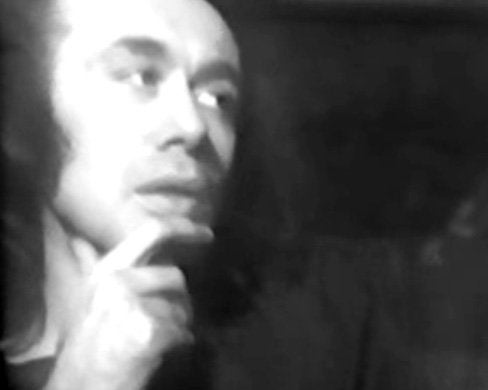
Vito Acconci, the provocative performance artist who used his body to explore themes of voyeurism, sexuality, narcissism and identity, has died at 77 years old. The cause of death was a stroke, according to art dealer Kenny Schachter.
A radical pioneer who’s still known to many as the man who masturbated beneath floorboards as part of a gallery performance, Acconci was born in the Bronx in 1940. His father was a bathrobe manufacturer and his mother worked in a public school cafeteria. Educated at all-boys Roman Catholic schools from elementary school until college, he received his BA from College of the Holy Cross in 1962 and an MFA in poetry from the University of Iowa.
Though he began his career as a poet, creating the mimeographed magazine 0 TO 9 with Bernadette Mayer, he began to focus on performance art in the late ‘60s. “Even though I loved words, I wanted words to be actions,” he told ArtNews last year.
Most of Acconci’s performance and video works utilized his body as a material. “My early work came out of a context of feminism,” he told Richard Prince in an interview with BOMB, “and depended on that context. Performance in the early seventies was inherently feminist art. I, as a male doing performance, was probably colonizing it.”
For his most infamous work, “Seedbed” (1972), he lay beneath the floorboards of Sonnabend Gallery, muttering sexual fantasies about gallery-goers while audibly masturbating. Those inside the gallery could hear Acconci’s words and moans over the loudspeakers. His jarring comments included: “you’re on my left ... you’re moving away but I’m pushing my body against you, into the corner ... you’re bending your head down, over me ... I’m pressing my eyes into your hair.”
“Decades ago, when I first stumbled upon the performative works of Vito Acconci such as ‘Seedbed,’ a monumental mastabatorial endurance test, I was profoundly taken aback,” Schachter wrote to HuffPost in an email. “Not aghast at the seeming crudeness of it all, but in love with the notion of the endless possibilities as to what could be art that the act engendered.”
The controversial piece, like many more of his works, explored the relationship between artist and viewer, establishing intimacy through obviously unconventional and uncomfortable means. Acconci’s other notable early performances include “Following Piece” (1969), for which he spent a month following strangers on New York streets, stopping only when they entered a private space he could not enter. In “Pryings” (1971), a collaboration with artist Kathy Dillon, Dillon closed her eyes and Acconci used his hands to try to pry them open.
In his interview with Prince, Acconci explained that many of his performances attempted to, in some way, erase his own (white, male) body. “Remember, this was just after the late sixties,” he said. “The time — the starting time of gender other than male, race other than white, culture other than Western; I wanted to get rid of myself so there could be room for other selves.”
In the 1980s, Acconci’s work moved into the realm of architecture. He explained his motivation for the shift to Architectural Record in 2007. “The beautiful thing about architecture, it does have the anticipation of renovation always built into it, which I find so refreshing from art because art is supposed to be unchangeable. The only things that are unchangeable are tombstones.”
In 1988, he established the architecture practice Acconci Studio and in 1992, worked with Steven Holl to create the exterior for the Storefront for Art and Architecture.
In 2016, celebrating its 40th anniversary, MoMA PS1 hosted an exhibition revisiting Acconci’s immense influence on performance art titled “VITO ACCONCI: WHERE WE ARE NOW (WHO ARE WE ANYWAY?), 1976.” The show presented a survey of Acconci’s early works, believing they captured the essence of energy and experimentation that defined the institution.
PS1 director Klaus Biesenbach, who organized the show, communicated the undeniable impact of Acconci’s legacy to The New York Times. “He’s one of the most influential artists of his time because of the way he connects the private with the public sphere, the body with the street, the media space with the personal space,” he said. “He’s challenging our limits about what we want to be private and what we want to be public, and those questions have only become more important.”
When asked during his BOMB interview “What do you live for?,” the artist replied with the following: “What keeps me living is this: the idea that I might provide some kind of situation that makes people do a double-take, that nudges people out of certainty and assumption of power. (Another way of putting this: some kind of situation that might make people walk differently.)”
Through his daring, bizarre and distinctly mortal works, Acconci accomplished just that. His spirit will be missed but always remembered.

